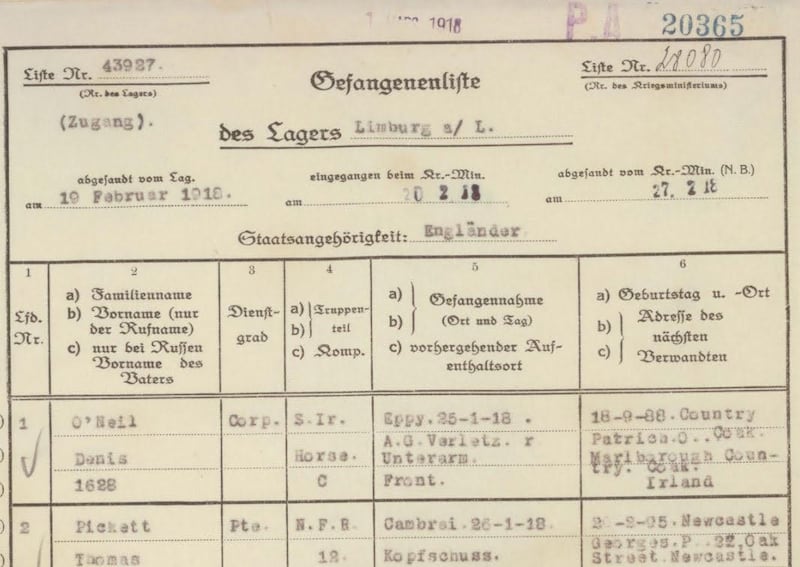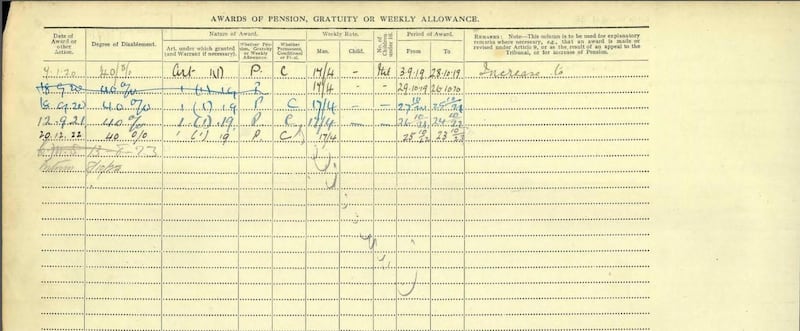Who killed Michael Collins? It remains one of the greatest unanswered questions of Irish history 99 years after his death.
An avalanche of speculation has produced a molehill of facts relating to the tragedy of Collins who was shot dead at Béal na mBláth on August 22nd, 1922 aged just 31. Over the last century there have been numerous books, academic papers and articles speculating on who fired the single shot that killed Collins.
The careless and cack-handed way in which the Provisional Government set up under the Anglo-Irish Treaty of 1921 handled the killing has fuelled allegations of an official cover-up.
No inquiry, inquest or autopsy report was carried out despite the significance of the individual involved.
‘Degradation of the Irish Bench’ – Colum Kenny on Sir John Ross and a private plea in 1919
Broadcaster’s look to the past uncovers unlikely family war story
Commemorating RIC next year might be less contentious - historian
Diarmaid Ferriter: It’s still hard to rise above the emotion of the War of Independence
In recent decades suspicion has fallen on Denis ‘Sonny’ O’Neill a former British soldier turned IRA volunteer who joined the anti-Treaty side during the Civil War.


There had been rumours since 1922 that O'Neill, allegedly a trained marksman, who fought in the British Army in the first World War, was the one who fired the fatal shot.
His name was confirmed in an 1980 RTÉ documentary about Michael Collins, entitled The Shadow of Béal na mBláth. Eamonn de Barra, an IRA intelligence officer at the time, suggested O'Neill never intended to kill Collins, but rather to fire a warning shot. The bullet richocheted off a lump of limestone and hit Collins in the head.
Files in the Military Service Pensions Collection which were opened in 2014 confirm O’Neill’s presence at the Béal na Bláth ambush. Curiously or incuriously, the pension accessors never asked him if he fired the fatal shot and he never volunteered the information.
Art historian and performer Paddy Cullivan has uncovered new evidence to suggest that Sonny O'Neill could not have been the shooter.
O’Neill is mentioned in a 1924 Free State intelligence report as a “first-class shot”, but there is no evidence Cullivan says to suggest that he ever operated as a sniper either for the British army or the IRA. Had he been a sniper, he would have been deployed as one in the War of Independence.
Moreover, Cullivan has uncovered documentation from the German archives which shows that when O’Neill was repatriated as a prisoner-of-war in 1918 he had a severe wound to his right arm. O’Neill was captured in 1918 while serving with the Royal Irish Regiment (RIR) in the war.
Disability pension
He had been in the Royal Irish Constabulary (RIC) before the war and reapplied to join afterwards but was rejected on the grounds of his disability. He also received a disability pension from the British army after the war.
Documentation found by Cullivan in the British archives show O’Neill was judged to have had a 40 per cent disability to his right arm at the time he allegedly shot Collins.
In his two-part documentary The Murder of Michael Collins, Cullivan says O’Neill’s disability alone would have ruled him as the sniper.
The distances involved is another factor, Cullivan believes, in ruling him or another anti-Treaty ambusher as the assassin. According to witnesses on both sides at Béal na Bláth the ambush party were 150 metres (450 feet away) and the shot was taken at twilight when visibility was low.
By comparison Lee Harvey Oswald was 100 metres (300 feet away) when he shot former US president John F Kennedy in Dallas on November 22nd, 1963 and he needed three shots to hit the president.
Cullivan states that for a disabled man like O’Neill to have hit Collins with a single shot to the head from a distance of 150 metres in poor visibility was like “winning the Euromillions lottery twice in the same week”.
Instead, Cullivan believes that Collins was shot by his own side, possibly by Major General Emmet Dalton, who was in the touring car with Collins on that day, or someone in the Free State convoy.
This explains the wound to the head which proved to be fatal for the commander-in-chief of the National Army.
Cullivan stresses that he is not accusing Dalton of having killed Collins, though he is the chief suspect on the pro-Treaty side. There are a lot of questions over Dalton’s involvement in the incident and his testimony is inconsistent, he believes.
The ultimate beneficiary of his killing was the British, Cullivan believes, as they had information Collins intended to march on the North if peace could be agreed between the pro and anti-Treaty sides.
He believes British intelligence may have organised the ambush to take Collins out and that both the Treaty and anti-Treaty sides may have been unwitting accomplices in the killing.















